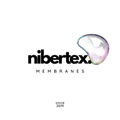Interviews
Unique tangalia weaving art receives GI tag
02 Dec '09
4 min read
Recently, the Tangaliya Hastkala Association, located in Wadhwan, Gujarat has recieved the Geographical Indications of Goods (Registration and Protection) Act, 1999. National Institute of Fashion Technology (NIFT) assisted the association in procuring the GI registration. The products for which the GI registrations were sought are Shawls, Sarees and handkerchiefs.
Tangalia craft has a distinction of its own. It consists of knotting a contrast color thread, along the warp and pushing them together to create the effect of raised dots. This unique art is done using wool, cotton, silk, acrylic and viscose. The tangaliya products are made up of natural and synthetic material or a combination of both.
Since ages, weavers have designed motifs inspired by nature and their surroundings. Tangaliya motifs have a very geometric and graphic feel. The emphasis is on basic shapes like squares, rectangles, triangles and circles. The placement of ach dana is done precisely by calculating the distance between the warp and the weft yarns. Lots of contrasting colors are used in dana work. Commonly used colors are Blue, Green, red, pink, black, grey, maroon, purple and orange. White is used most prominently along with other colors.
The most basic motif of Tangaliya is the Ladwa - it refers to a ladoo, an Indian sweet. The other predominant motifs are peacock, felt of peacock, Ambo tree (Mango tree), Khajuri (Date palm tree), peacock on bush, peacock with diamond shape motif and peacock sitting on bungalows and airplanes. Tangaliya is produced in Surendranagar district of Gujarat and is spread over around 26 villages, practiced by a particular community called "Dangasia" (earlier a part of the Shepherd community).
Tangaliya Weavers Association established under the Societies Registration Act 1860 is responsible for the production and marketing of Tangaliya. Tangaliya (also spelled as Tangalia) is a very unique craft and has its origin and history in the roots of early settlement of life in the Saurashtra region of Gujarat, unfortunately, this craft either remained unnoticed or beyond the reach of the craft historians. Moreover, the craft was basically produced for the use of the community, which also created self-sufficiency and sustainability in supporting the entire community with clothing.
Tangalia craft which is distinctive from others consists of knotting a contrast color thread, along the warp and pushing them together to create the effect of raised dots. The effect is created without the use of any mechanical device and is manufactured using pit loom, which is installed in their homes, as the craft is basically a household activity. The pit looms do not have a warp beam; instead, the yarn hank is knotted to a pole from which the yarns are connected through the heald shafts to the cloth roll at the weavers end.
Tangalia is woven in plain weave and is woven in wool, cotton, acrylic & viscose. The motifs are made by danas. The weaver picks up little bit of the yarn of the required colour and twists it around the raised warp thread, wherever required and beats it in with the beater.
Tangalia craft has a distinction of its own. It consists of knotting a contrast color thread, along the warp and pushing them together to create the effect of raised dots. This unique art is done using wool, cotton, silk, acrylic and viscose. The tangaliya products are made up of natural and synthetic material or a combination of both.
Since ages, weavers have designed motifs inspired by nature and their surroundings. Tangaliya motifs have a very geometric and graphic feel. The emphasis is on basic shapes like squares, rectangles, triangles and circles. The placement of ach dana is done precisely by calculating the distance between the warp and the weft yarns. Lots of contrasting colors are used in dana work. Commonly used colors are Blue, Green, red, pink, black, grey, maroon, purple and orange. White is used most prominently along with other colors.
The most basic motif of Tangaliya is the Ladwa - it refers to a ladoo, an Indian sweet. The other predominant motifs are peacock, felt of peacock, Ambo tree (Mango tree), Khajuri (Date palm tree), peacock on bush, peacock with diamond shape motif and peacock sitting on bungalows and airplanes. Tangaliya is produced in Surendranagar district of Gujarat and is spread over around 26 villages, practiced by a particular community called "Dangasia" (earlier a part of the Shepherd community).
Tangaliya Weavers Association established under the Societies Registration Act 1860 is responsible for the production and marketing of Tangaliya. Tangaliya (also spelled as Tangalia) is a very unique craft and has its origin and history in the roots of early settlement of life in the Saurashtra region of Gujarat, unfortunately, this craft either remained unnoticed or beyond the reach of the craft historians. Moreover, the craft was basically produced for the use of the community, which also created self-sufficiency and sustainability in supporting the entire community with clothing.
Tangalia craft which is distinctive from others consists of knotting a contrast color thread, along the warp and pushing them together to create the effect of raised dots. The effect is created without the use of any mechanical device and is manufactured using pit loom, which is installed in their homes, as the craft is basically a household activity. The pit looms do not have a warp beam; instead, the yarn hank is knotted to a pole from which the yarns are connected through the heald shafts to the cloth roll at the weavers end.
Tangalia is woven in plain weave and is woven in wool, cotton, acrylic & viscose. The motifs are made by danas. The weaver picks up little bit of the yarn of the required colour and twists it around the raised warp thread, wherever required and beats it in with the beater.
Popular News
Leave your Comments
Editor’s Pick
































-Ltd..jpg?tr=w-120,h-60,c-at_max,cm-pad_resize,bg-ffffff)





.jpg?tr=w-120,h-60,c-at_max,cm-pad_resize,bg-ffffff)
.jpg?tr=w-120,h-60,c-at_max,cm-pad_resize,bg-ffffff)






